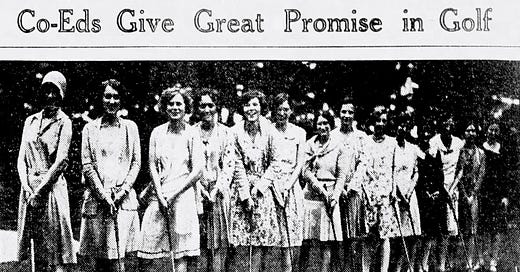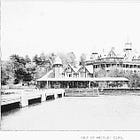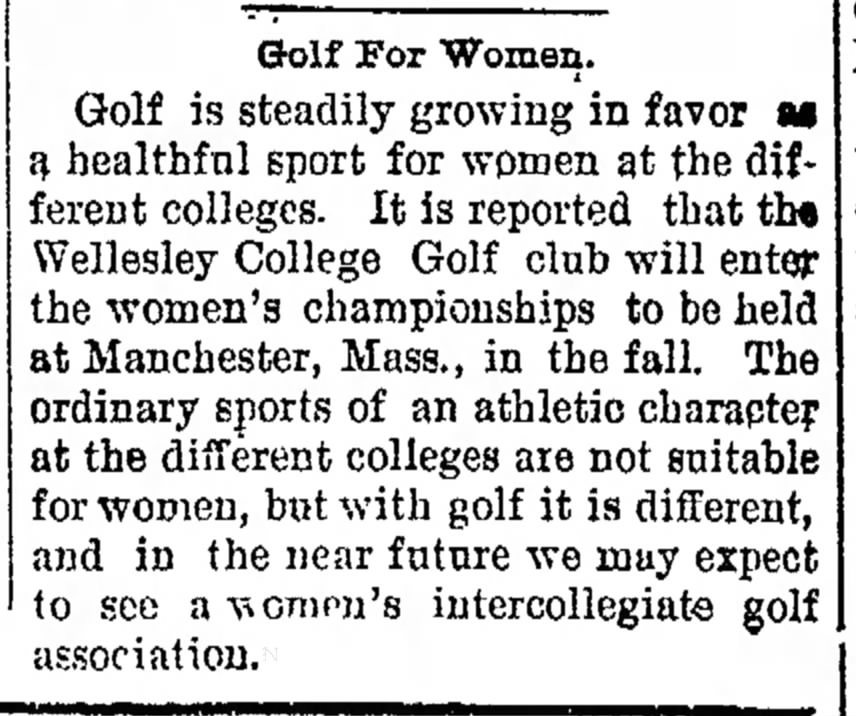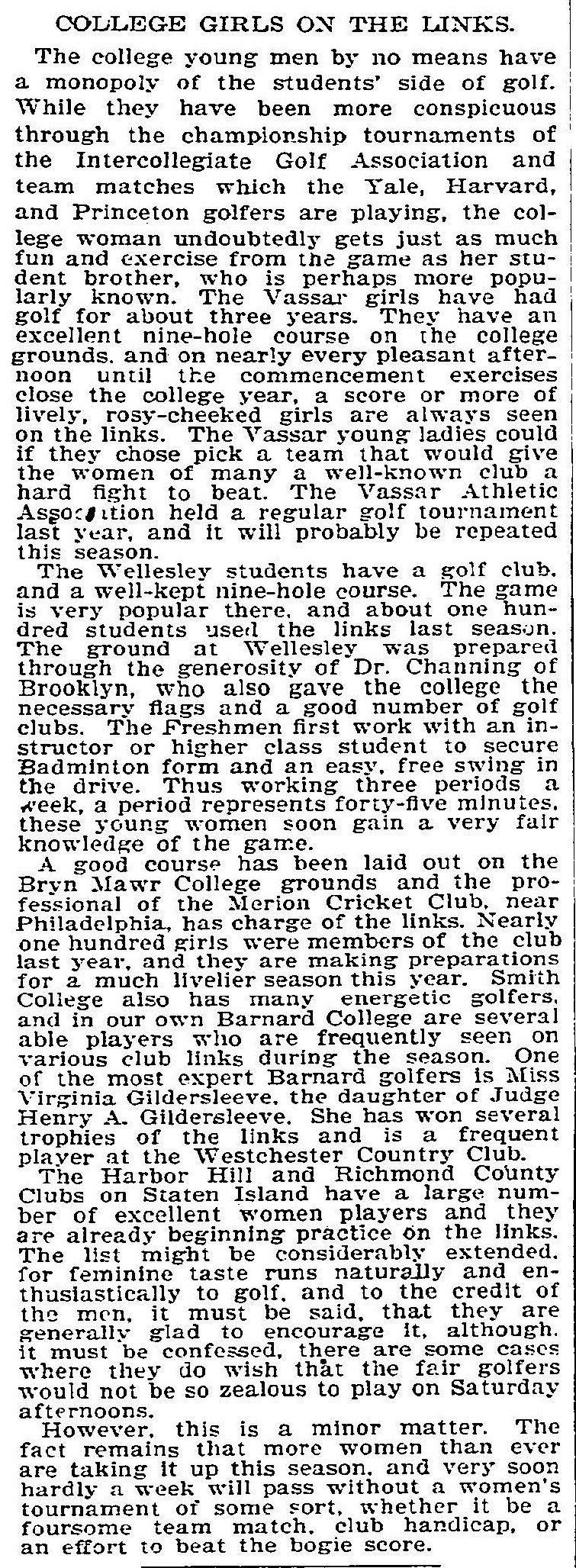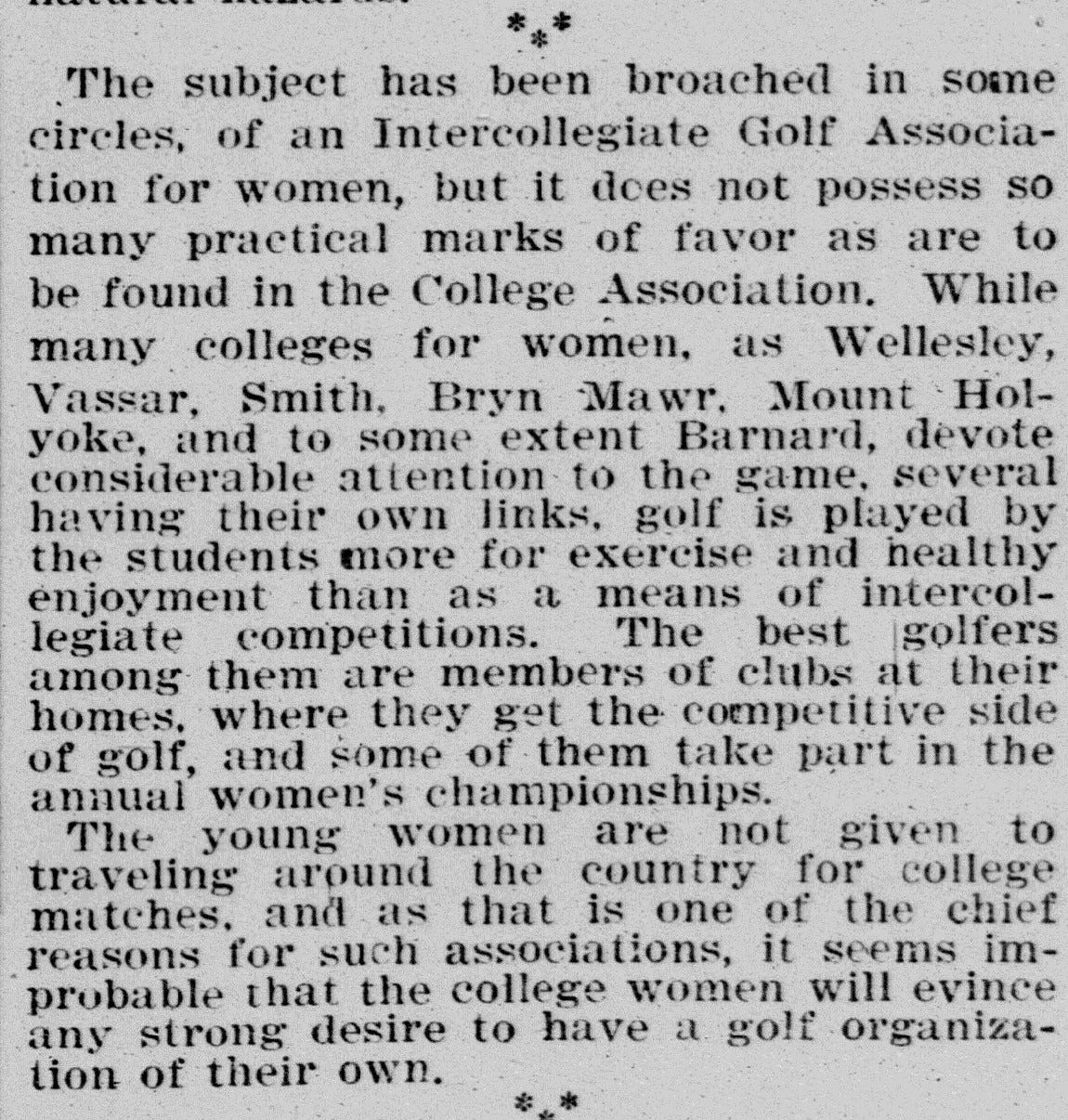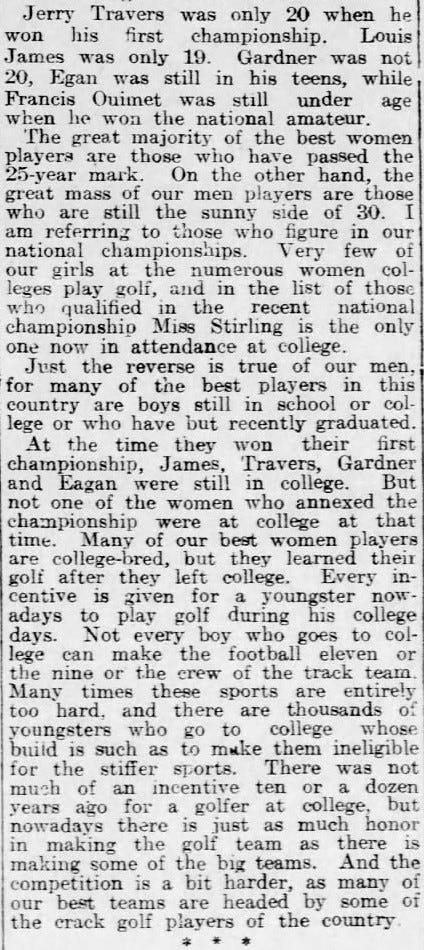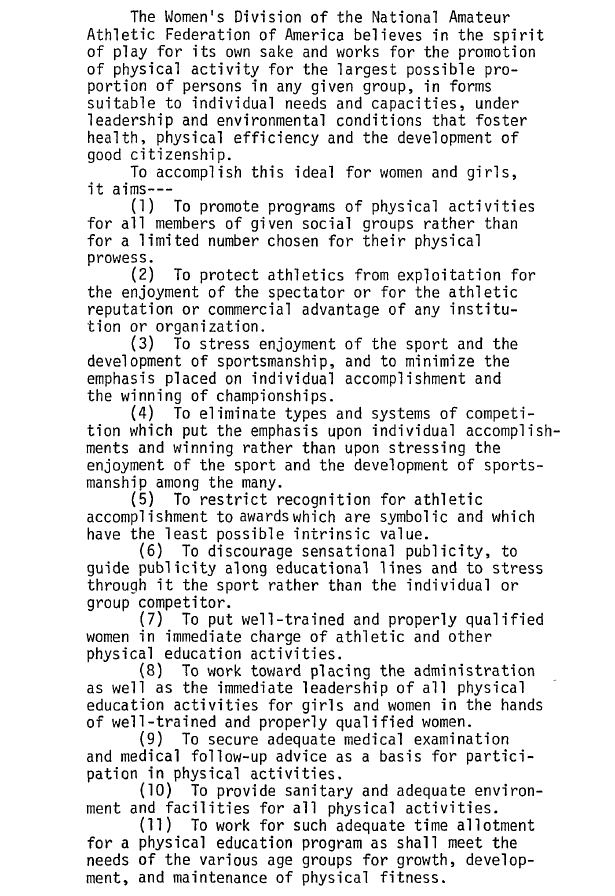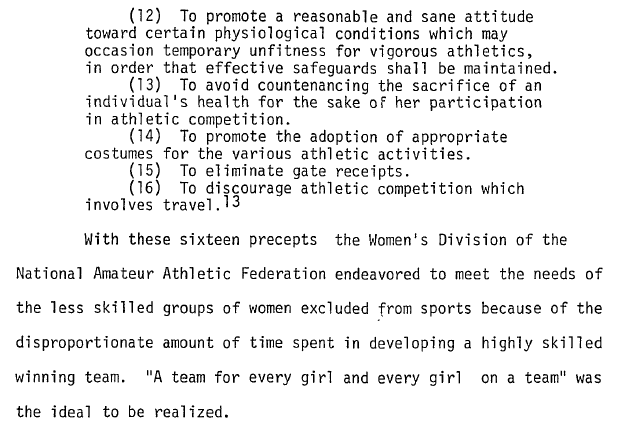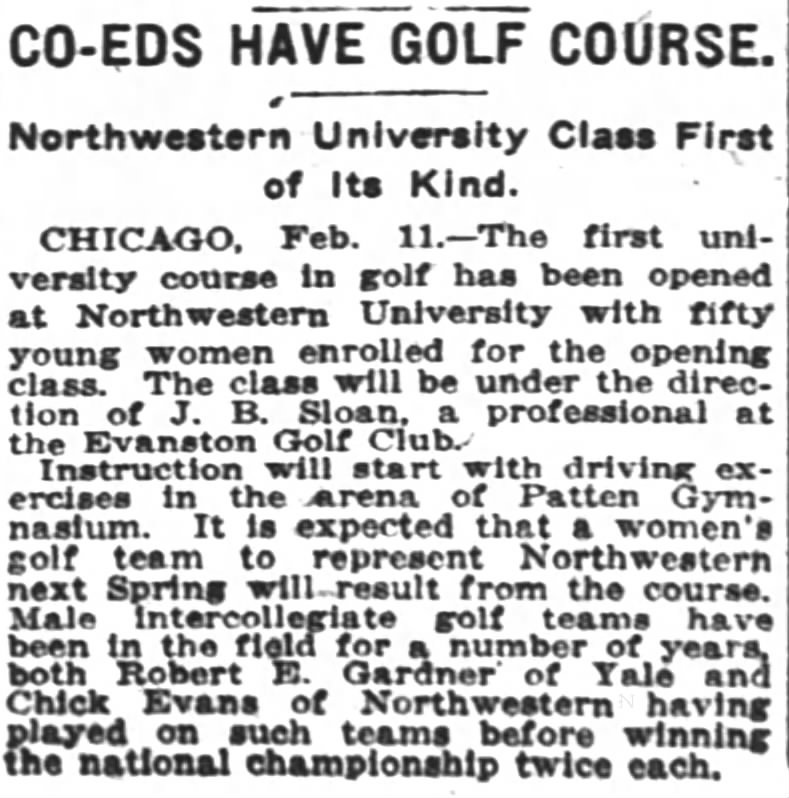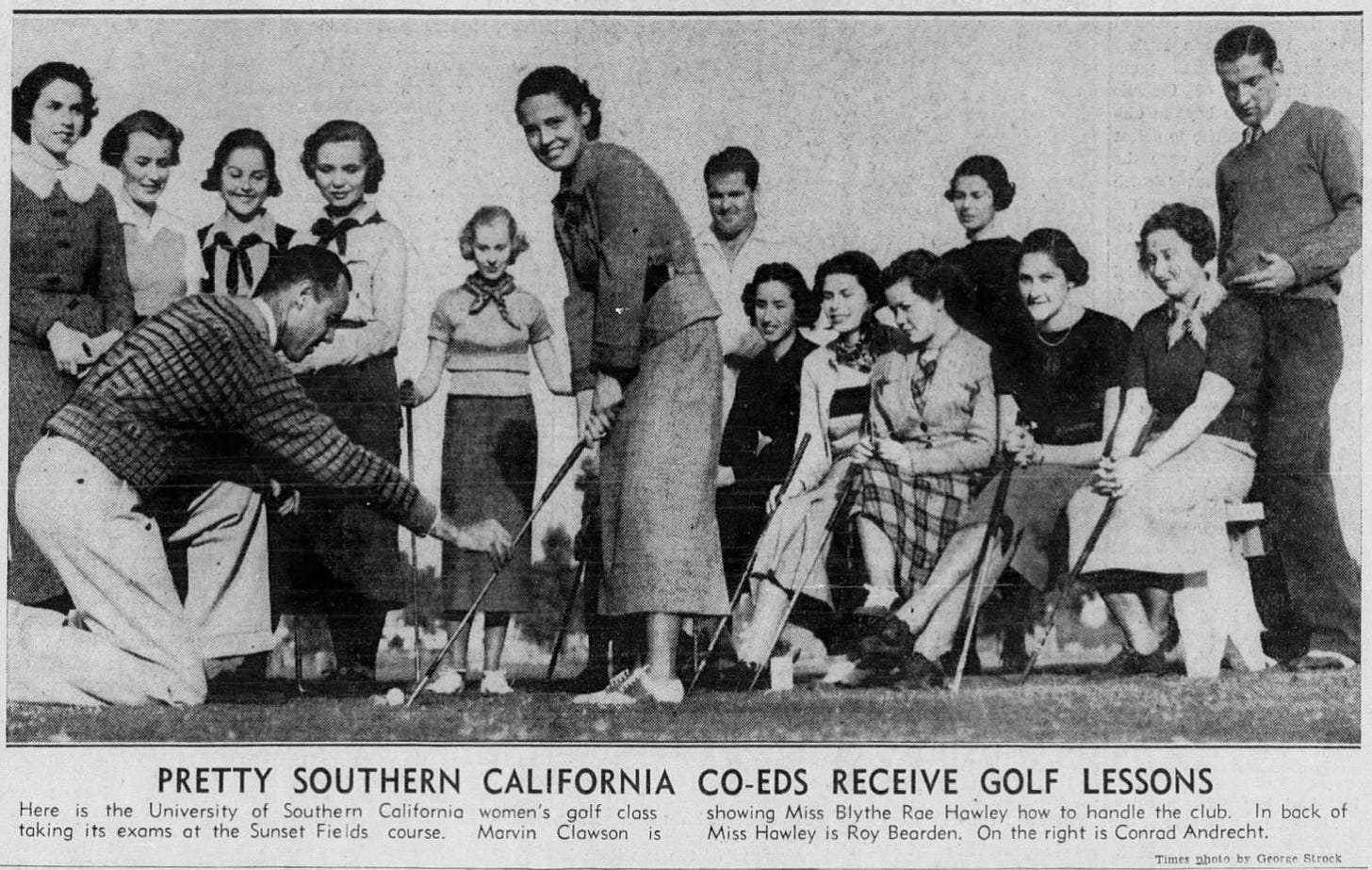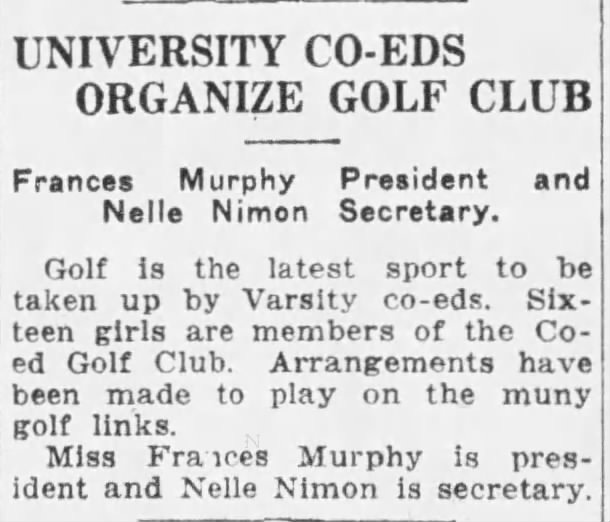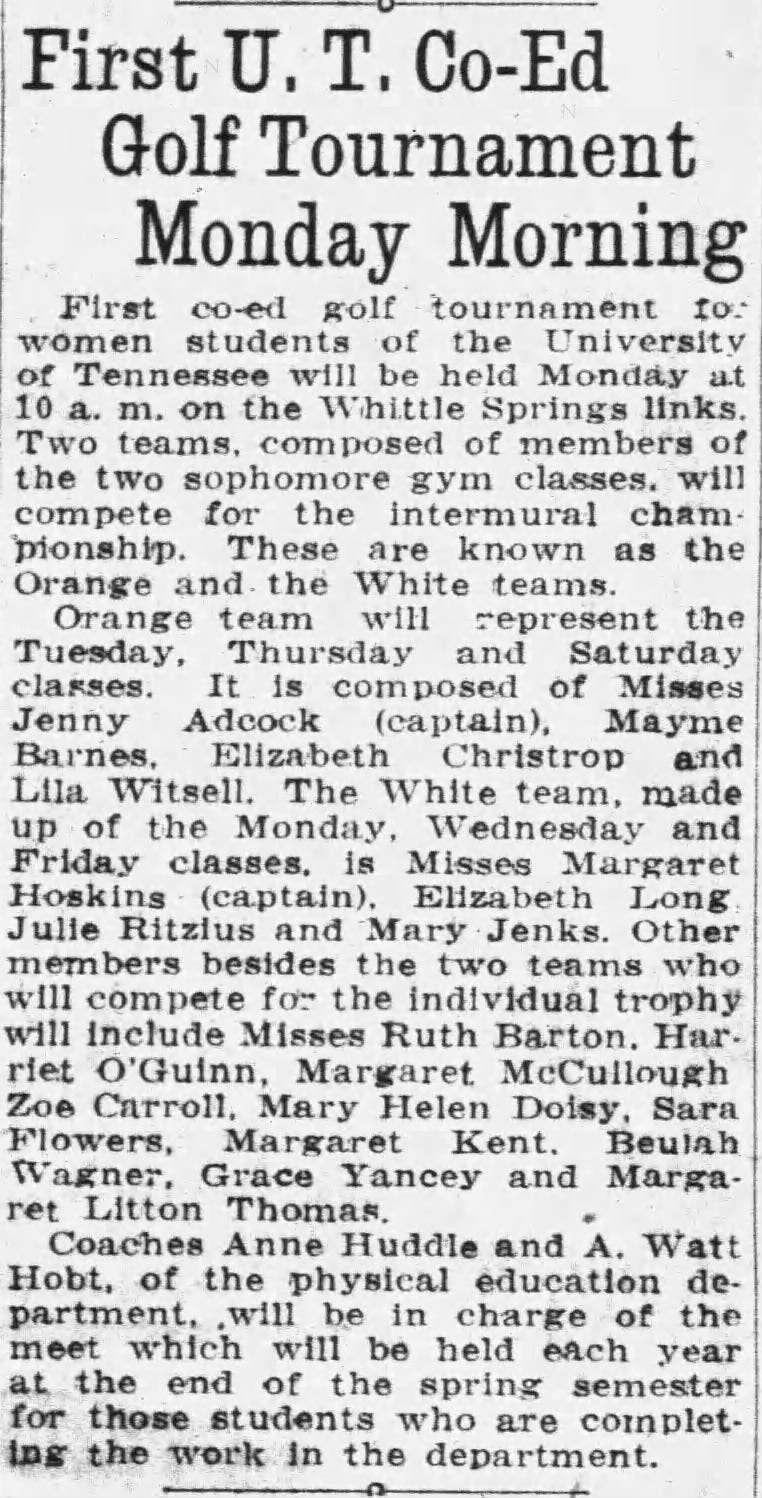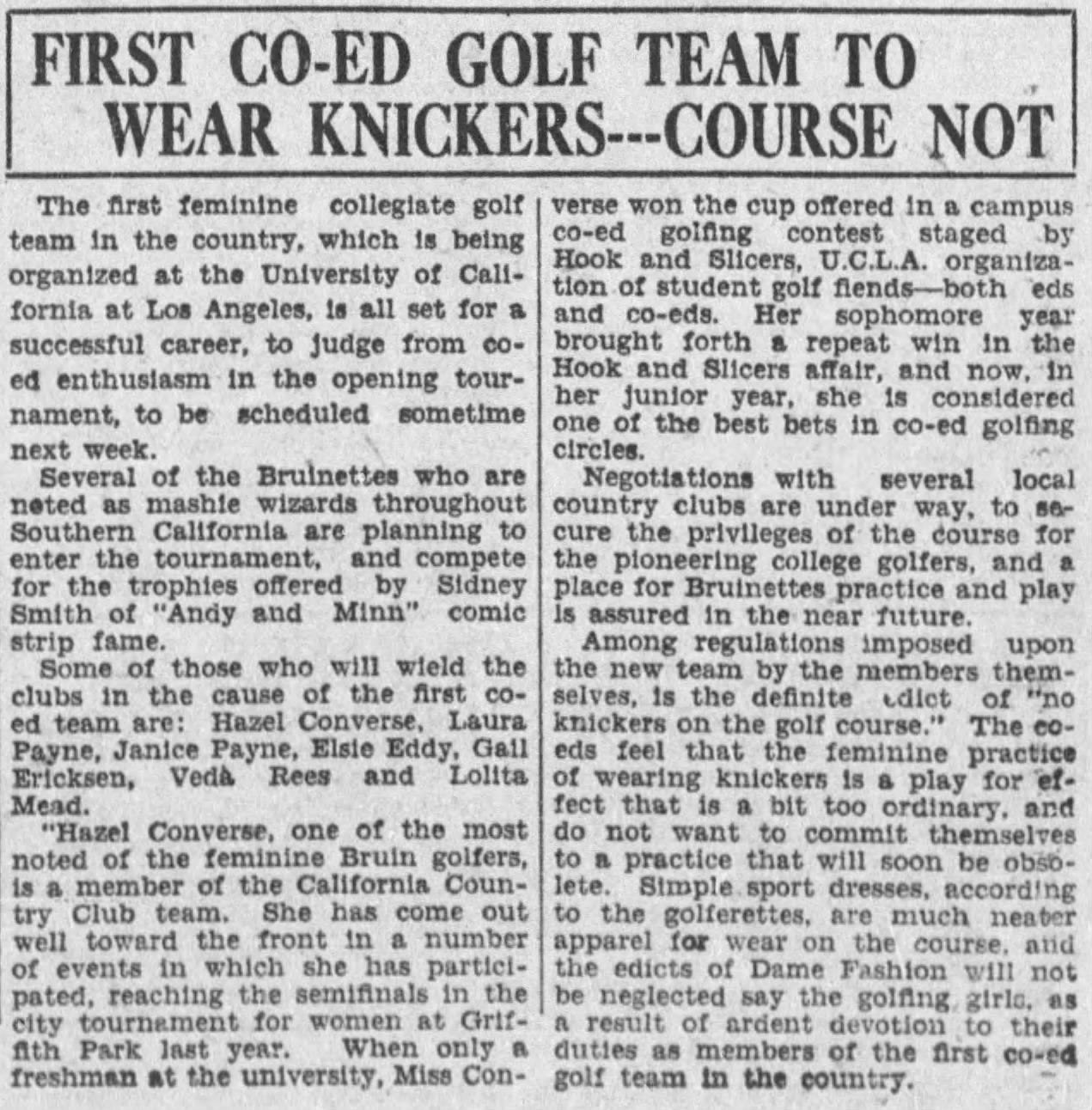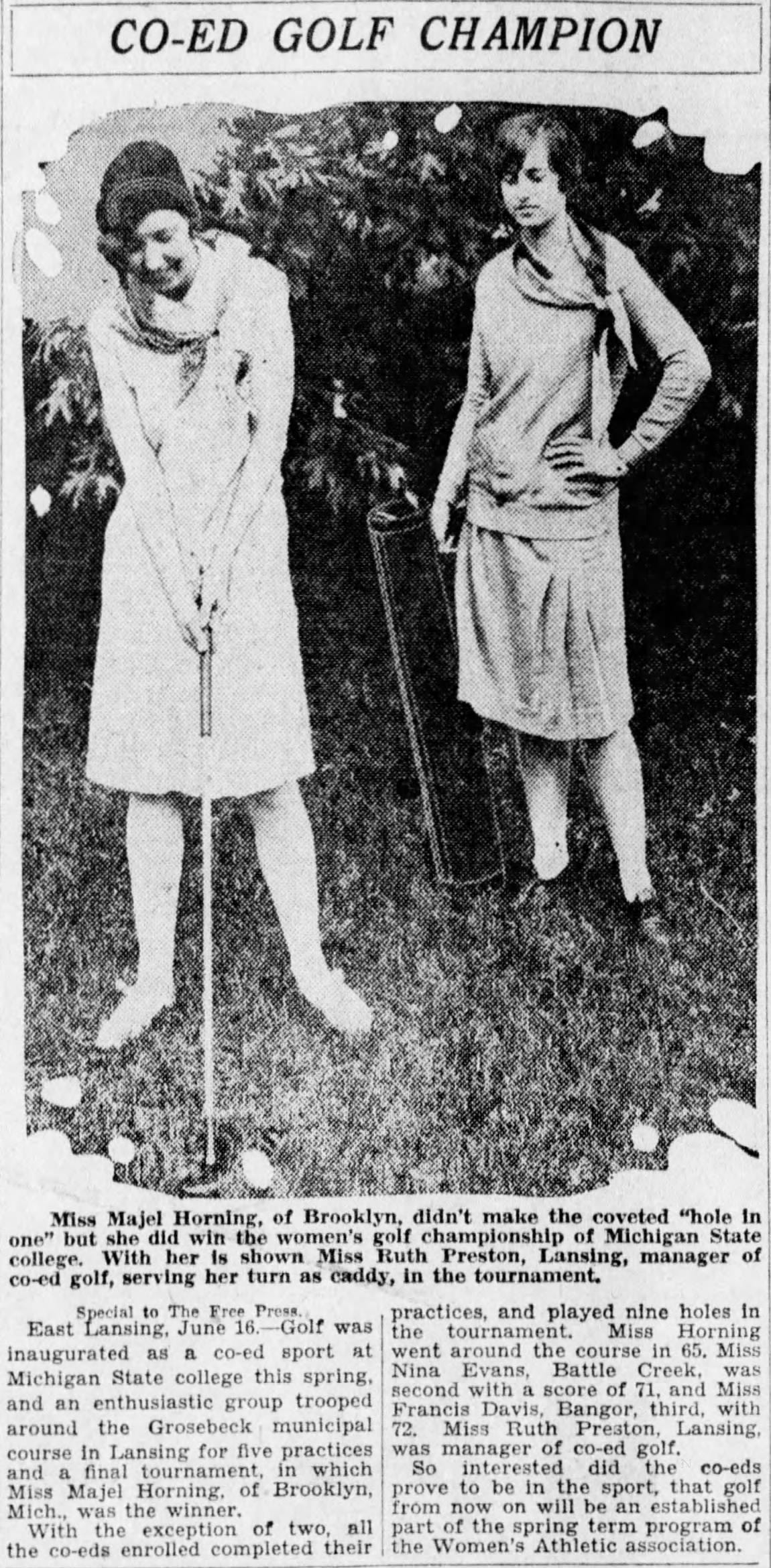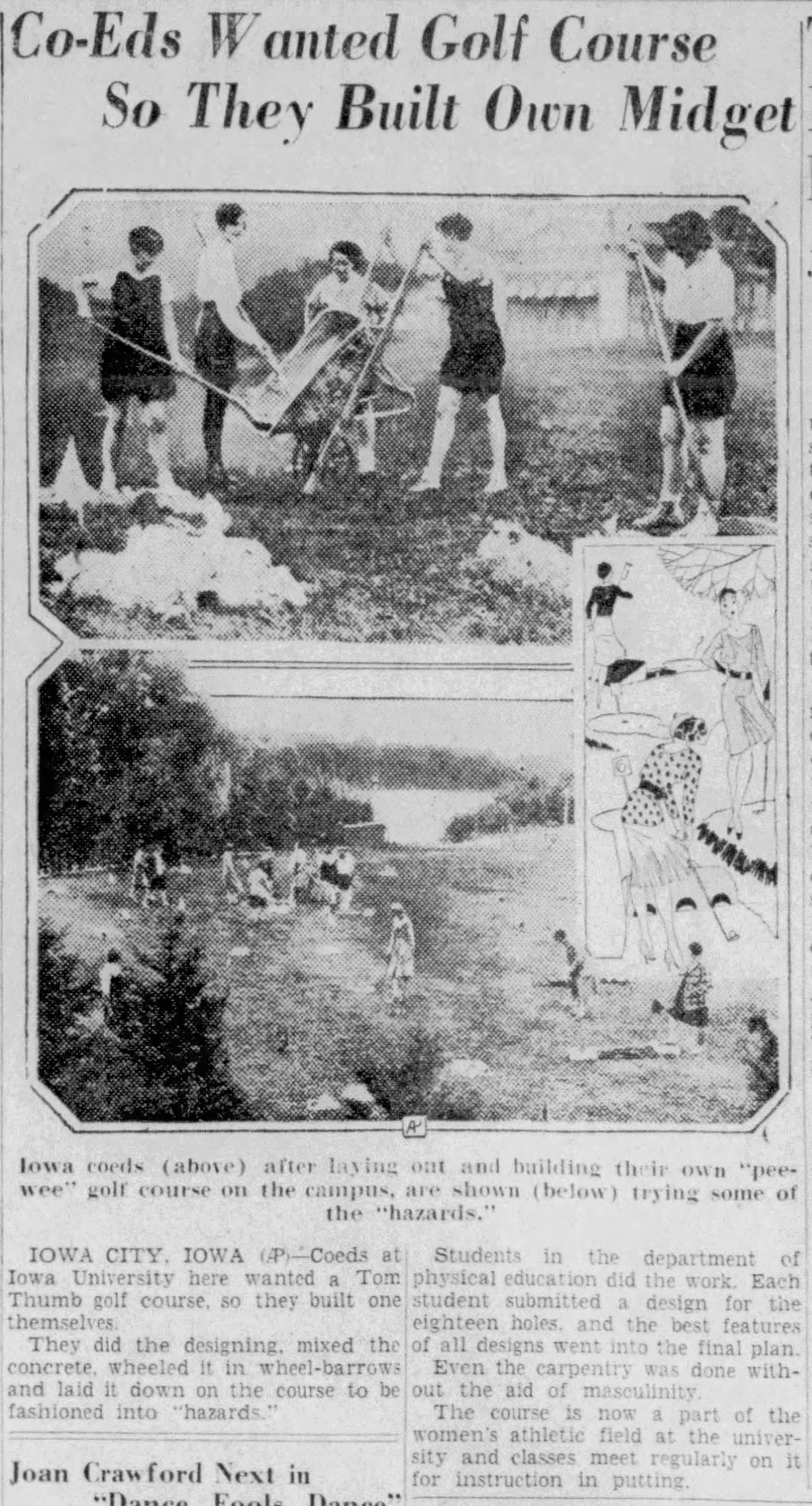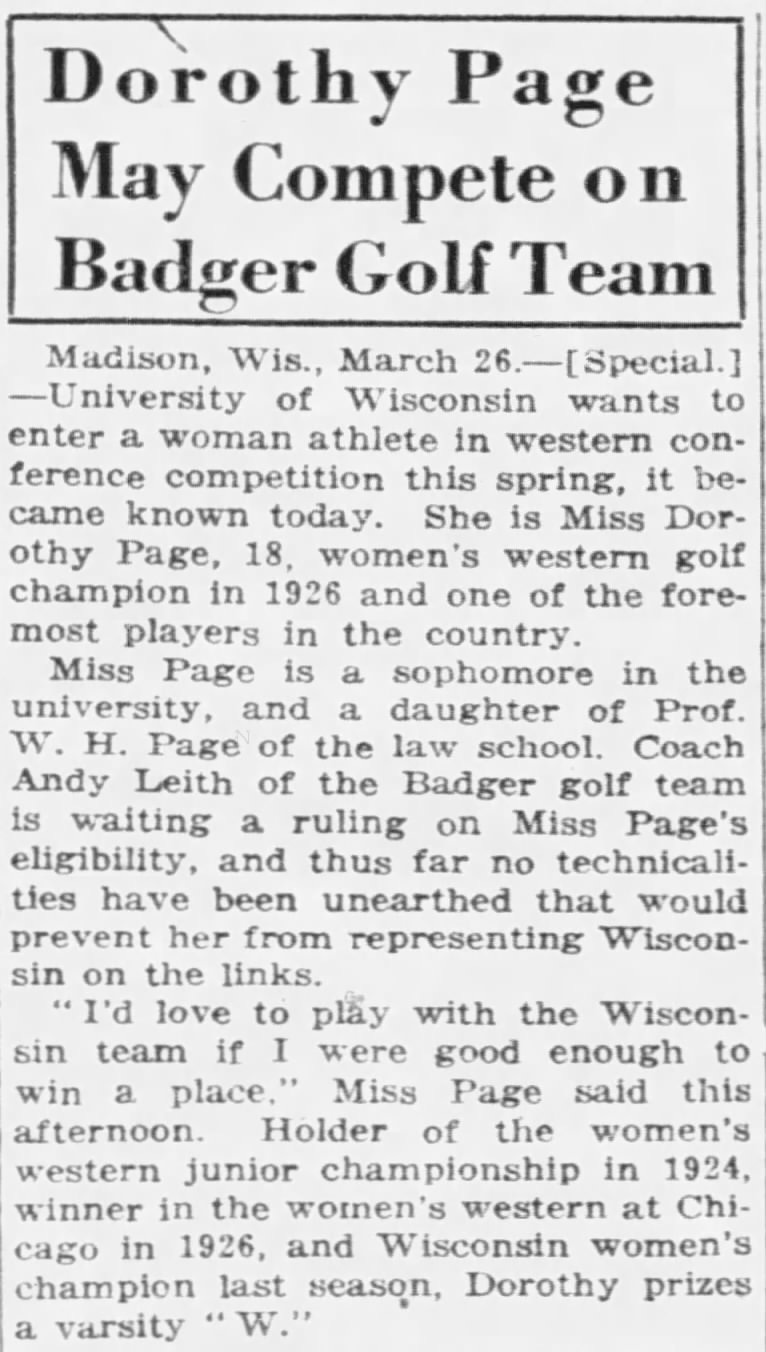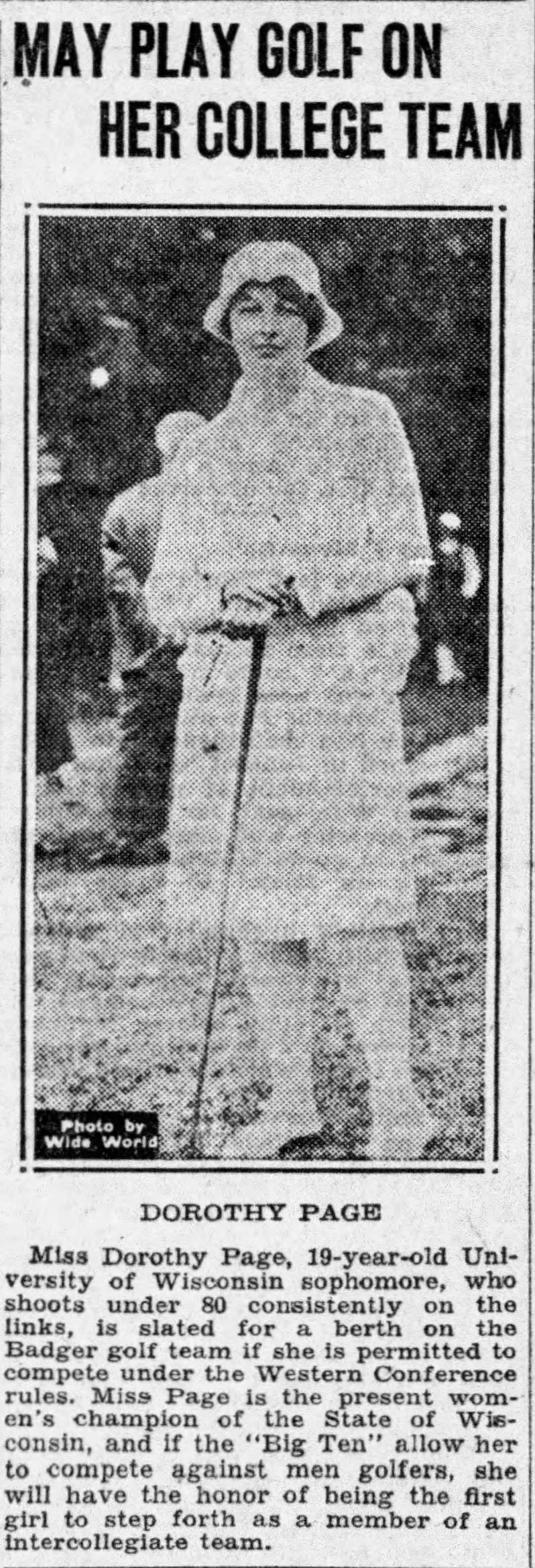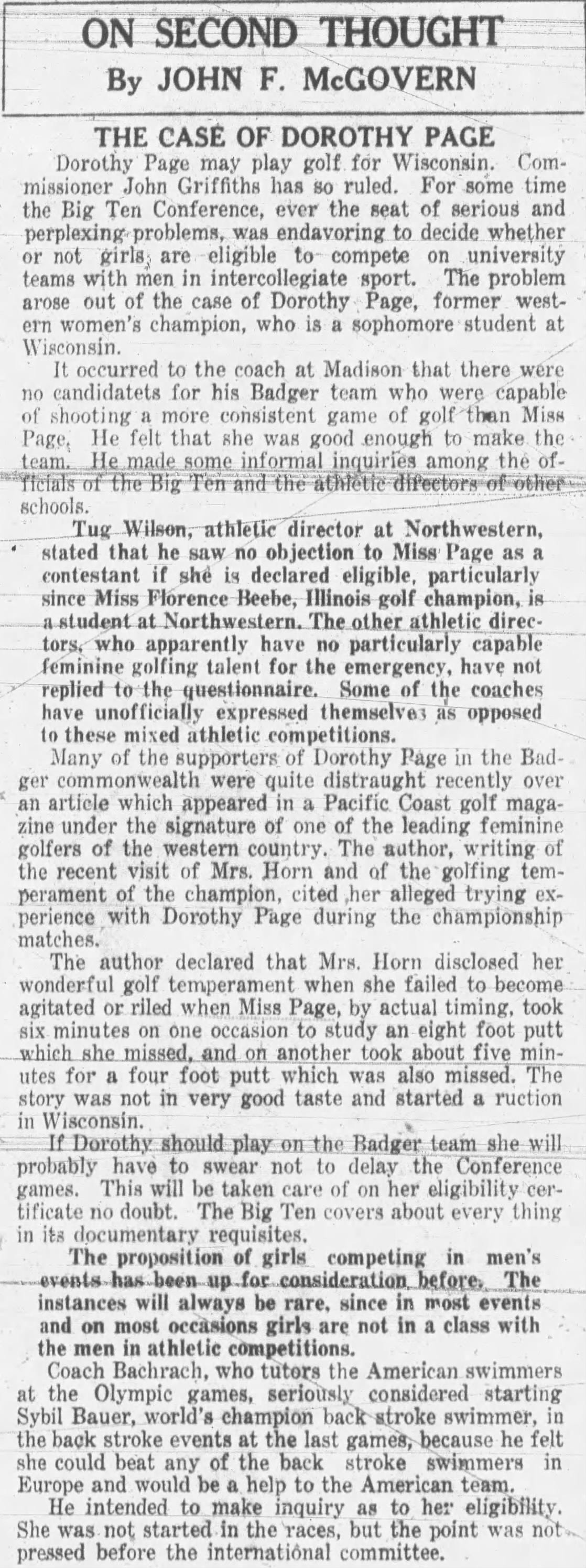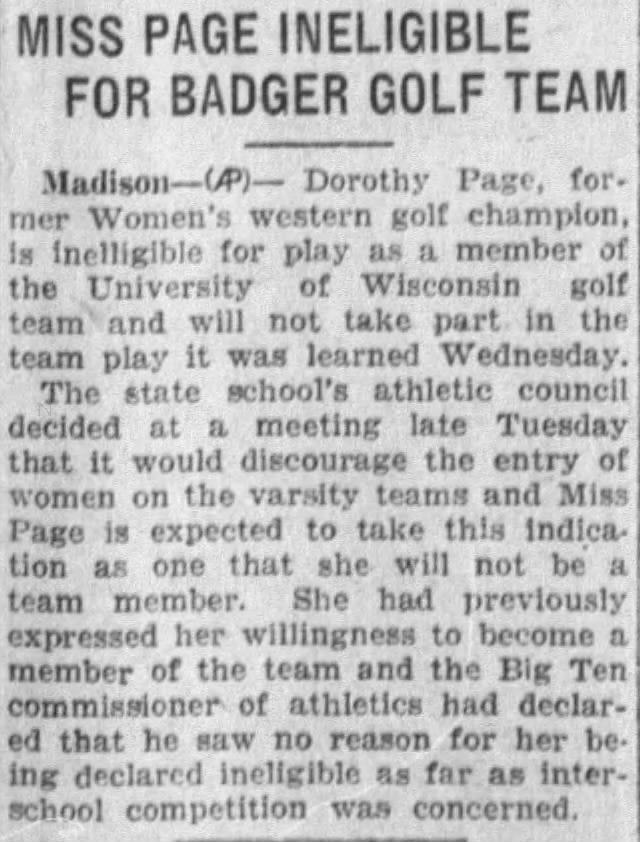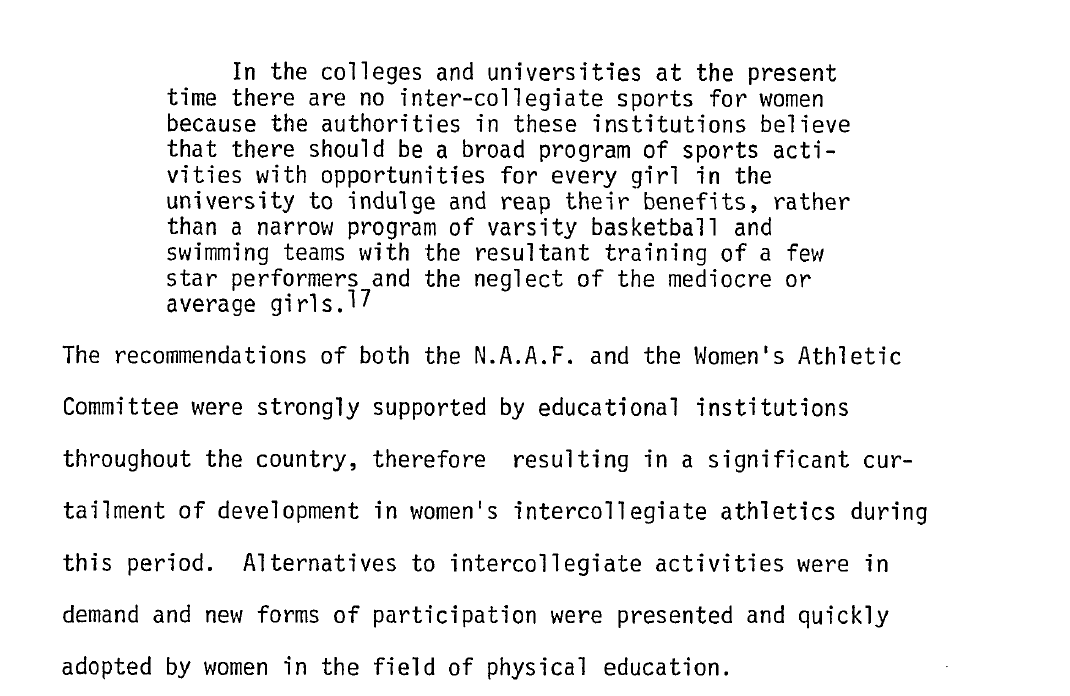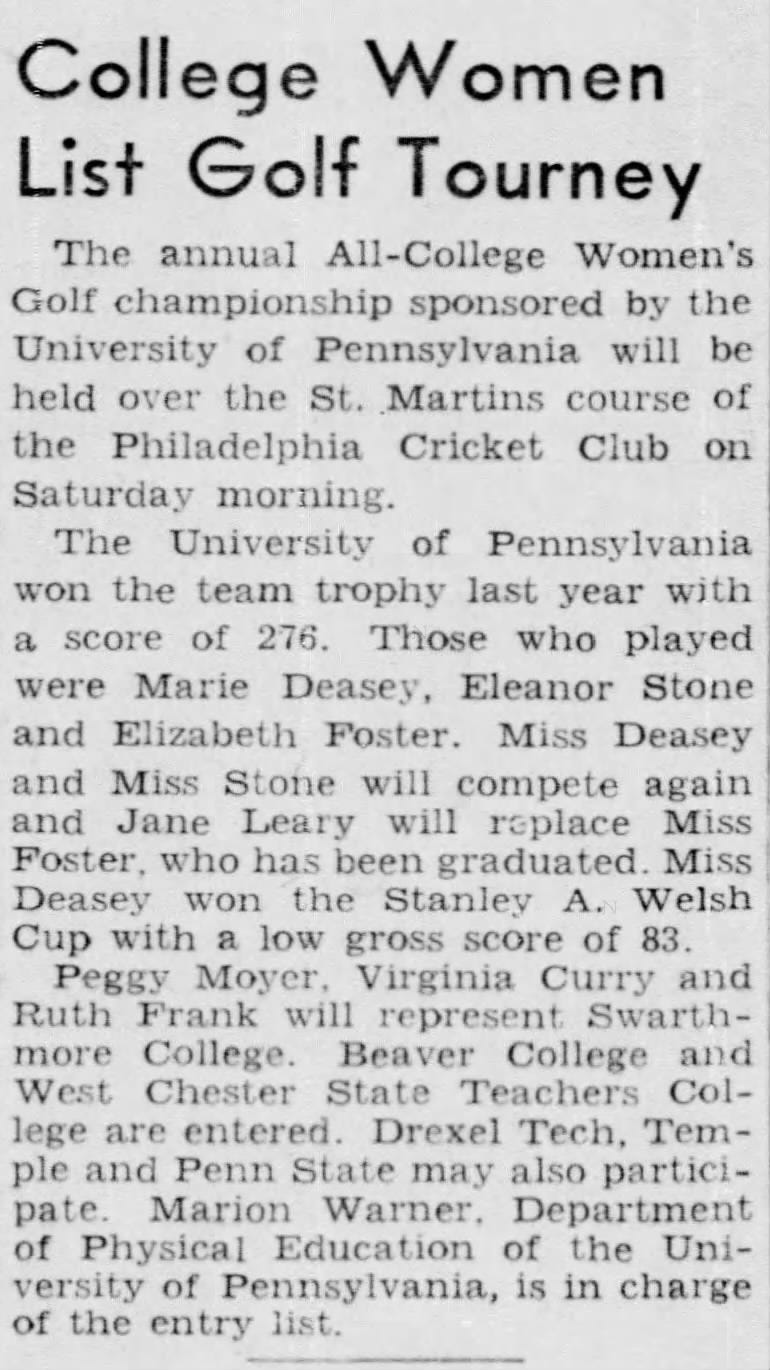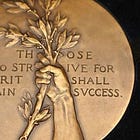This is part of a series on the Women’s Collegiate Championships
With NCAA women’s golf dating back to 1982, how many championships will have been played by the conclusion of the 2023-24 season? The answer, of course, is 42 since there was no championship held in 2020.
But there is also another answer - a more correct answer that only encourages more questions.
You see, the women’s collegiate golf championship held in June 2024 will in fact be the 80th such championship, dating all the way back to a tournament held at Ohio State University Golf Club in 1941. Would it surprise you to learn that nearly all nationally organized women’s intercollegiate athletics was born from that first golf tournament?
Golf has played an important role in the history of women’s college sports and yet nearly half of its championship history has been relegated to a mere footnote due to the NCAA’s gradual emphasis on (and embellishment of) its own [forceful] takeover of women’s athletics being the historical starting point. In this series, we aim to dive deeper into the rich history of the women’s college golf championships, starting with an examination of events that lead to that first championship.
*NOTE 1: underlined text provides a link to references or sites with more information
*NOTE 2: we have done our best to cull out sources that contain problematic language or sentiments, but sometimes those things cannot be helped or are otherwise included to illustrate a point; we hope you understand this usage and recognize its educational purpose is not an endorsement
THE ORIGINS OF COLLEGIATE GOLF
In another series, we explored the history of men’s college golf dating back to the first collegiate golf match in 1896, which was not long after the sport as a whole got started in the United States. If you haven’t already, we invite you to explore that series to get a better understanding of how collegiate golf evolved from an Ivy League competition to a truly national sport even before the NCAA takeover in 1939.
Understanding the history of men’s intercollegiate golf helps give some context to the women’s game, but not in the way you might expect. Instead of finding parallels between the two, the contrasting development of the men’s and women’s game becomes interestingly (and painfully) apparent. Even from the very beginning in the late 1890s, the idea of founding a comparable Women’s Intercollegiate Golf Association fizzled out rather quickly despite the apparent popularity of the sport among college women. Why? Of course, the answer is complicated, but from the three newspaper clippings below we can already get the sense that for women’s golf the emphasis, rightly or wrongly, was less on the competition and more on the activity itself.
Despite an initial surge in popularity, interest in golf while at college had still not quite taken off among women even by the outbreak of WWI. This rather insightful observation in the Philadelphia Inquirer in 1916 highlights how collegiate golf had become the proving ground for some of the best men’s players in the country while the best women’s players, though college-educated, had not reached their highest potential until after school.
With the end of the war came a new outlook on life in the United States. It’s difficult to capture the social milieu as it specifically relates to college golf over a century ago, however, the following passage from Mary Daniels’ 1977 Ph.D. dissertation on the subject of the evolution of women’s sports 1880s-1970s1 highlights how the physical toll from the global war effort opened people’s eyes to the need for stronger physical education for all young people, and the specific approach taken for women and girls.
MILESTONE EVENTS
College golf for women was “rediscovered” and gradually introduced to a new generation of female students in the 1920s through the 1930s. Much like before, the competition was not the focal point of playing and there was now more stringent organization and guidelines in place to guide the approach to not only golf but all women’s sports. Given this framework understanding, here are certain milestones reached on the path towards national competition.
GOLF CLASSES
Golf classes for women would become popular throughout the 1930s-40s, but began with sporadic offerings in the 1920s. Some of the earliest institutions to offer these classes include Northwestern, Miami of Ohio, and Cincinnati, which all began doing so in 1922. These classes were considered to be introductory in nature and were immediate hits.
COLLEGE INTRAMURAL CLUBS
Intramural tournaments in various sports among a school’s student body were not uncommon at many colleges for both men and women. Golf became one of the easiest ways for women to organize and grow their own athletic clubs. The sport was not only becoming more readily accessible, it was also considered to be a “safe” sport for women of all skill levels to play. Institutions both large and small began offering the means for women to establish a golf club and play tournaments once a year (or semester) to determine the school’s champion.
OFFICIAL COLLEGE TEAMS
Eventually, university-recognized women’s golf teams began popping up around the country. Despite the growing popularity, the step from intramural sport to official school team was often seen by the women’s physical education department as being a step too far. Even when teams were formed, there were often strict guidelines that had to be followed and very few matches due to both the lack of nearby competition and the general restriction on traveling. Because of this, it was often difficult to distinguish between a university’s intramural golf team and an “official” one - schools often had one or the other but not both - especially when it came time to name the school golf champion for the semester/year.
FACILITIES
The concept of university golf facilities was still a long way off, however, the beginning point can be seen during this timeframe. Some larger universities or those with more historical ties to the men’s side of the sport had courses that welcomed female players as well. In some cases the women had to take matters into their own hands. Such was the case at the University of Iowa where students built their own short course for practice!
WOMEN COMPETING ON MEN’S TEAMS
Naturally, there were some players who weren’t content with the few competitive opportunities offered to them and/or their abilities on the course gained the attention of men’s teams.
Although there had no doubt been a few instances of women trying to break into the men’s collegiate teams prior to the 1930s, the nature of the sport itself along with the dramatic rise in the number of colleges and even high schools across the nation fielding a golf team created a better opportunity than ever for female’s to “push the boundaries” and try to join these teams.
One of the earliest prominent examples of a woman attempting to earn her spot on the (men’s) university team was Dorothy Page at Wisconsin (1928). We can see from the following newspaper clippings both how big of a deal this was considered as well as the fact that she was not being dismissed out of hand. Miss Page, as she is often referred to in these national publications, was recognized as an outstanding player and had a legitimate case to become a member of the university team due to her outstanding play on the course. In other words, this wasn’t being flippantly disregarded or treated as a publicity stunt.
Northwestern Athletic Director, Ken “Tug” Wilson (who would eventually serve as the second commissioner of the Big Ten Conference) let it be known he was in favor of allowing Miss Page to play on the Wisconsin team as Northwestern had its own superstar player in Florence Beebe who they wanted to play on the men’s golf team. No matter his motives, having another prominent proponent making Dorothy’s case publicly was a huge boon.
Despite optimism that Dorothy would get her chance, she was eventually ruled ineligible not by the conference itself but rather the school’s own athletic council. There was sentiment among both men and women educators who felt that having female students play in male athletic events would be problematic for a number of reasons. This is an interesting and somewhat counter-intuitive argument when it comes to advancing women’s athletics, which will come up in a major way by the time the women’s intercollegiate golf championships were finally instituted.
Over the next decade several other women would make regional and national news as they encountered similar roadblocks.
Though not an exhaustive list, some of those women include: Dorothy Hunter [Boston U, 1930], Sara Guth [Washington (St. Louis) U, 1936], Hilda Livengood [Illinois, 1937], Ruth Tustin [Oregon, earned a “numeral” for competing on the men’s freshman team in 1938], Dorothy Sellars [Oregon State], Patty Berg [Minnesota, 1939], Jane Crum [South Carolina, 1940], Marjorie Hyre [Kent State, 1940], Adelia Thomas [San Diego State, 1940], Jean Stuhler [Queen’s College, 1942], Phyllis Otto [Northwestern, 1945], Bopie Whitaker and Mary Lane Faulk [Florida State, 1948].
We previously covered the incredible story of Janet Shock [Denison] and Eva Shorb [Wooster] - later known as Eva Weiskopf, mother of legendary PGA Tour pro Tom Weiskopf - which we’d highly recommend reading for more info on this specific topic:
COMPETITIONS BETWEEN WOMEN’S COLLEGIATE TEAMS
As mentioned before, it’s difficult to properly frame women’s athletics prior to WWII without writing an entire dissertation. In fact, this author has found at least 4 such extensive papers that cover the subject in much finer detail than we have room for here. The summation of those is that instead of being centered around competitive sporting events that would lead naturally into regional or national championships like men’s athletics had, women’s athletics were rooted in physical education with competitive events being a secondary (or even intentionally ignored) concern. This was an intentional decision made in 1923 when the National Amateur Athletic Federation (Women’s Division) took its stand against athletic competition for women at all levels of education up through college.
Into the 1930s, the majority of **organized competition in women’s collegiate athletics took the form of a concept known as “play days” where two or three schools - typically within relatively close proximity - would have a series of events over the course of 1-2 days. These events included a number of intramural sports ranging from things like tennis, archery, and other outdoor sports including sometimes golf. The emphasis when playing these events was on the “play for play’s sake…[there] is spontaneous fun which is unspoiled by the tension of an overexcited audience and an overstimulated team.”2
Even with this being the case, there are still some documented early matches between university women’s golf teams and teams of female members at local country clubs. This was actually still somewhat common on the men’s side and had been primary competition throughout the year for men’s university teams (or clubs) little more than a decade prior. Occasionally, though, schools would have their golf teams compete against each other in matches that mirrored the format of men’s varsity and freshmen matches.
Finally, a few intercollegiate golf tournaments were first held in the late 1930s. One of the earliest documented tournaments for female collegiate players was at the Tuskegee Intercollegiate Golf Tournament in 1938 which featured both men’s and women’s teams from institutions now known as Historically Black Colleges and Universities (HBCUs), which was won on the women’s side by Cora Lee McClinick of Tuskegee. The next year, the University of Pennsylvania hosted an all-women’s collegiate golf tournament at the famed Philadelphia Cricket Club. Their event only lasted two years (1939 and 1940), but could arguably be considered the precursor to a national championship as some of the teams in the field would enter the first women’s intercollegiate golf championship the next year at Ohio State.
Building to the First Intercollegiate Championship
Knowing that trying to cover all of the above information as well as how the women’s intercollegiate championship got its start at Ohio State would be too much for one post, we wrote about the latter in this previous post:
For simplicity’s sake, we’ll conclude with a broad timeline of events that brought both men’s and women’s championships to Ohio State University’s courses in 1941:
June 1939 - First NCAA men’s golf championship
Dec 1939 - Ekwanok CC announced as host for 1940 NCAA (men’s) championship
Apr 1940 - Patty Berg gives speech at AFCW hosted by University of Ohio State
May 1940 - Ohio State course(s) officially open with ceremonial match that includes Patty Berg
May 1940 - Ohio State hosts Big Ten championship
Fall 1940 - Ohio State creates stand-in organization tentatively called the Women’s National Collegiate Athletic Association
Dec 1940 - Ohio State course announced as host for 1941 NCAA championship
March 1941 - Ohio State announces plans for Women’s National Collegiate Golf Tournament
Apr 1941 - Unfavorable reactions to golf tournament plans at multiple women’s conferences
May 31 1941 - Deadline for entry into first Women’s Intercollegiate Golf Championship
June 1941 - Ohio State hosts NCAA (men’s) championship
June 1941 - Ohio State sponsors/hosts women’s championship
Thanks for reading!
Up Next: The First Championship (1941)
In the next post for this series, we will cover the first Women’s Intercollegiate Championship.
Daniels, Mary Ann, 1948. THE HISTORICAL TRANSITION OF WOMEN’S SPORTS AT THE OHIO STATE UNIVERSITY, 1885-1975 AND ITS IMPACT ON THE NATIONAL WOMEN’S INTERCOLLEGIATE SETTING DURING THAT PERIOD. The Ohio State University, Ph.D., 1977. Education, physical.
Daniels.

